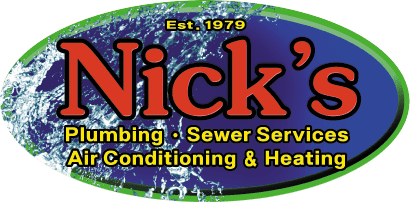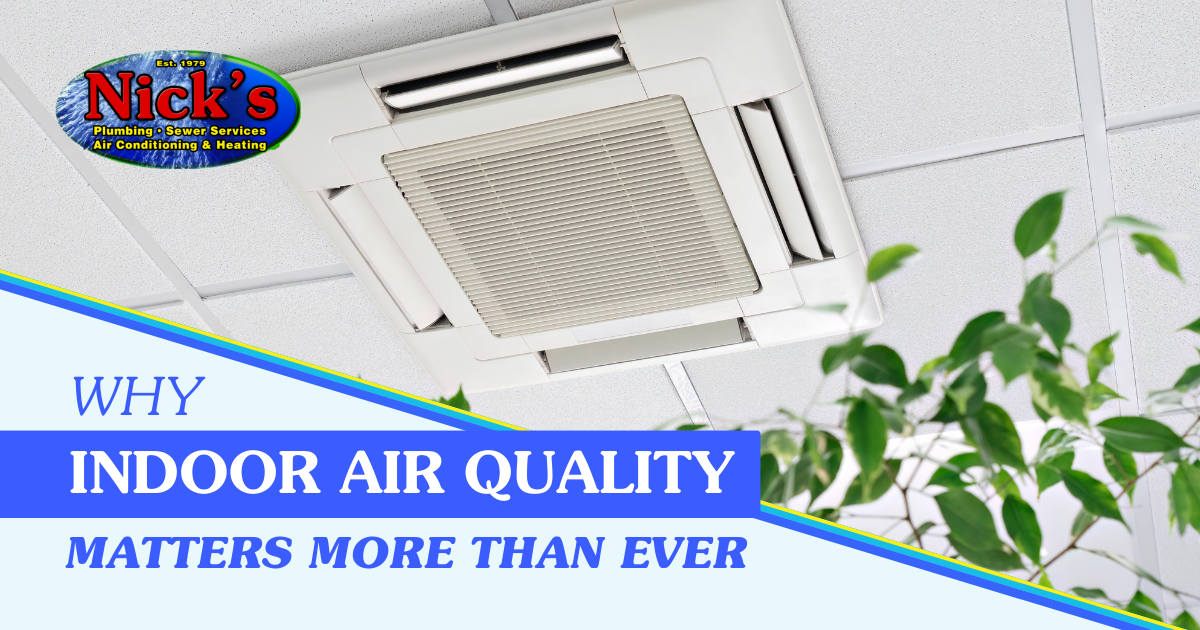Author: Onboarding
Why Indoor Air Quality Should Be Your Top Home Priority
Most of us think about the air we breathe outdoors — smog, pollen counts, ozone alerts — but spend little time considering the air inside our homes. That’s surprising when you consider we spend about 90% of our lives indoors, and indoor air can actually be more polluted than the air outside. The air inside your home isn’t just “background” — it can play a significant role in your family’s comfort, health, and even your energy bills.
So, let’s break down why indoor air quality is important, what affects it, and the most innovative ways to keep your home’s air clean and safe.
What Causes Poor Indoor Air Quality?
A lot of indoor air quality issues start with the stuff we use every day. Cleaning sprays, air fresheners, even that new coat of paint can give off invisible chemicals called VOCs — and they tend to hang around in the air longer than you’d think. Add in gas stoves, fireplaces, or even a few too many candles, and you’ve got extra emissions like nitrogen dioxide and fine particles floating around. Even the seemingly “quiet” things, such as carpets or furniture, can slowly release small amounts of pollutants over time.
Moisture is another significant factor. Whether it’s in bathrooms without adequate ventilation, leaky plumbing, or Houston’s year-round humidity, it can lead to mold growth. Mold spores are a major trigger for people with allergies and asthma and are easily spread through your HVAC system.
Outdoor Factors That Impact Indoor Air
Houston’s hot, humid, subtropical outdoor environment doesn’t do us many favors, either, for our indoor air. During pollen season, allergens sneak indoors every time you open a window or door. On hot summer days, ozone and smog levels rise, and these particles can also make their way inside.
Climate change has also made wildfires more common in the state — and, even if the fire isn’t nearby, smoke can travel hundreds of miles and get pulled into your home through your AC system, or through any open doors or windows. Standard window screens do not provide a sufficient barrier against such airborne particles.
In short, whether it’s cleaning chemicals, cooking fumes, or outdoor pollutants, the air inside your home collects more from the world around it than you might expect.
How Poor Indoor Air Quality Affects Your Health.
Breathing poor-quality air doesn’t always cause dramatic symptoms right away. For many families, it begins with subtle problems: itchy eyes, scratchy throats, or even a persistent fatigue that may come and go. These are all early health effects of indoor air pollution.
Over time, though, the risks get more serious.
Research has linked poor indoor air quality to conditions such as asthma, COPD, and other respiratory illnesses. Allergies are often aggravated when mold or dust mites thrive indoors. Some pollutants, such as formaldehyde or other fine particulate matter, are associated with long-term risks, including heart disease and cancer.
For anyone with children, elderly relatives, or family members who already struggle with asthma, clean indoor air isn’t just nice-to-have; it’s essential.
How Can I Tell If My Home’s Air Quality Is Bad?
It’s not always easy to tell when your home’s air quality is slipping, but some telltale signs could tip you off to what’s right under your nose:
- Frequent allergy or asthma flare-ups indoors.
- Lingering odors, even after cleaning.
- Condensation on windows can indicate excess humidity.
- Dust buildup around vents, even after you’ve cleaned.
If you’re constantly reaching for tissues or dealing with headaches and fatigue when you’re at home (but not when you’re outside), the air quality inside your house may be to blame.
How to Improve Indoor Air Quality in Your Home.
DIY Steps for Cleaner Air
Some of the steps homeowners can take to improve indoor air quality are almost effortless and can start to make a difference almost immediately.
- Opening windows on mild-weather days helps refresh stagnant air.
- Running your bathroom and laundry room exhaust fans can help reduce humidity that encourages mold and mildew growth.
- Swapping out HVAC filters regularly (every 60–90 days, or monthly if you have pets) keeps dust and pollen from circulating.
Houseplants don’t purify the air as much as some myths suggest, but they do help maintain humidity balance and make your space feel fresher. And don’t underestimate the power of a deep clean — vacuuming with a HEPA filter and regularly dusting surfaces significantly reduces the amount of irritating particles floating around your home.
Professional Solutions for Long-Term Clean Air
DIY steps only go so far.
For real indoor air quality improvement, you’ll need to enlist the help of your HVAC system. Whole-house filtration and purification systems are usually installed inside the ductwork and can remove pollutants before they spread throughout the house.
Platinum Carbon UV: The Gold Standard in Clean Indoor Air!
When it comes to professional solutions, few systems are as effective as the Platinum Carbon UV Air Purification System. This advanced whole-house purifier uses a combination of germicidal ultraviolet light, carbon filtration, and photocatalytic oxidation to neutralize pollutants. In plain English: it tackles nearly everything floating in your home’s air — from viruses, bacteria, and mold spores to the VOCs that cause odors and long-term health concerns.
One of the biggest wins for Houston families is how it handles VOCs. Everyday products, such as cleaning sprays, paints, or even new furniture, release compounds that linger in the air. The Platinum Carbon UV breaks down those compounds, reducing them to harmless water vapor and carbon dioxide.
It also disinfects the interior of your HVAC system. Depending on the placement, the UV light can target the coil — a common source of mold growth when humidity levels are high. The result is a cleaner system and cleaner air throughout your home.
For homeowners seeking comprehensive protection, the Platinum Carbon UV Dual System features a second UV lamp positioned at the coil for enhanced disinfection. Since both lamps share the same power supply, this system is more cost-effective than purchasing two separate units.
If duct-mounting isn’t an option, a magnet-mounted version fits directly inside the air system. In other words, the Platinum Carbon UV system can be installed in any central air conditioning system.
Are Professional Indoor Air Quality Assessments Worth the Cost?
Many homeowners wonder whether an indoor air quality assessment is genuinely worthwhile. In most cases, it is. Instead of guessing what’s in the air, a trained technician can check things like humidity, carbon dioxide, and pollutant levels, then show you precisely what your family’s breathing day to day. Having those numbers in hand removes the mystery from the problem and provides a solid starting point for making improvements.
At Nick’s Air Conditioning, we offer these assessments and use the results to recommend solutions tailored to your home. Sometimes, that means better ventilation or upgraded filters; other times, it may indicate a whole-house purification system, such as the Platinum Carbon UV. Either way, you’re not left guessing — you get a clear plan to make your home’s air cleaner and healthier.
Frequently Asked Questions About Indoor Air Quality
Do Air Purifiers Actually Improve Indoor Air Quality?
Yes, especially whole-house purifiers that work through your HVAC system. Portable units can help in one room, but systems like the Platinum Carbon UV clean the air throughout your home.
Will Cleaning My Air Ducts Improve Indoor Air Quality?
It can. If ducts are clogged with dust, debris, or mold, cleaning helps reduce those contaminants. Pairing duct cleaning with an upgraded filtration or purification system gives the best results.
Should I Have My Indoor Air Quality Tested Every Year?
Annual testing isn’t required for everyone, but if you have family members with allergies or asthma, or if your home has experienced water damage or mold issues, yearly testing is a prudent precaution.
Why Choose Nick’s Air Conditioning for Your Indoor Air Quality Solutions?
Nick’s Air Conditioning has been around long enough to know what Houston homes are up against. Between the humidity, pollen, and the way our water affects HVAC systems, maintaining healthy indoor air here requires a little extra know-how.
When you call us, it’s not about pushing a one-size-fits-all product. Our team takes the time to assess your home, system, and goals, then recommends what actually makes sense for you. If you’re tired of guessing about the air your family breathes, we’ll help you find a solution that puts you back in control.


